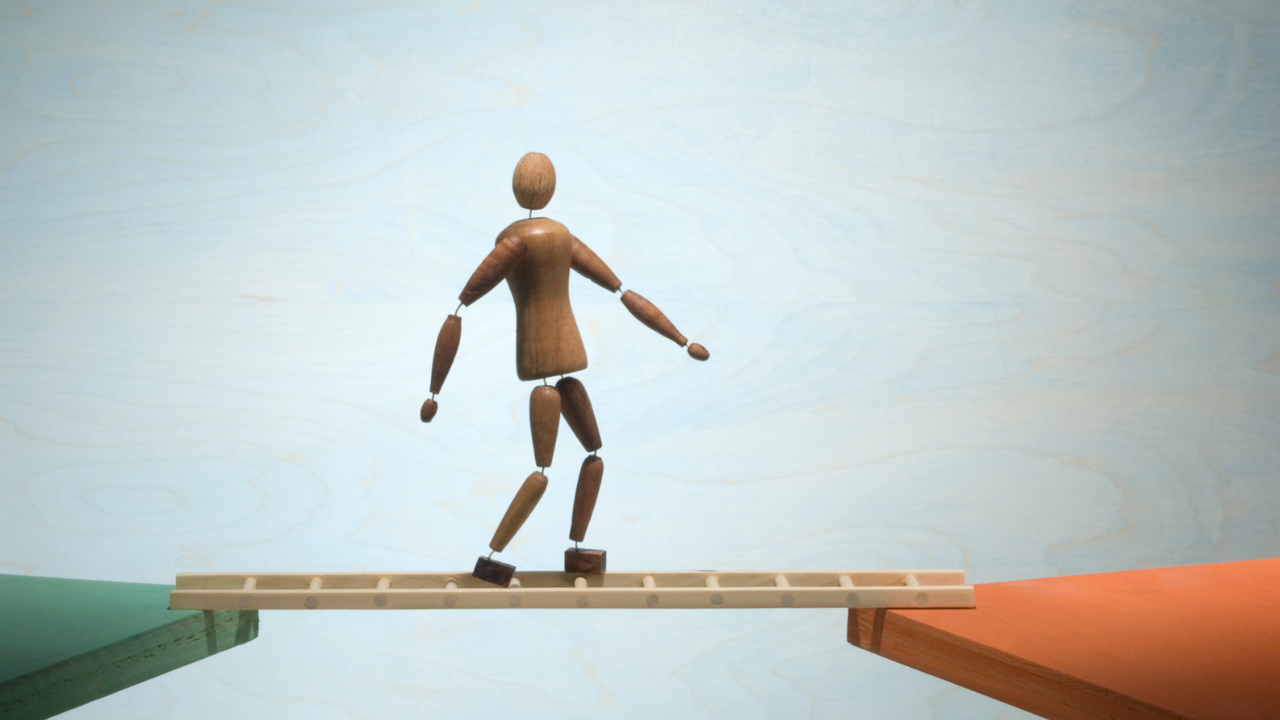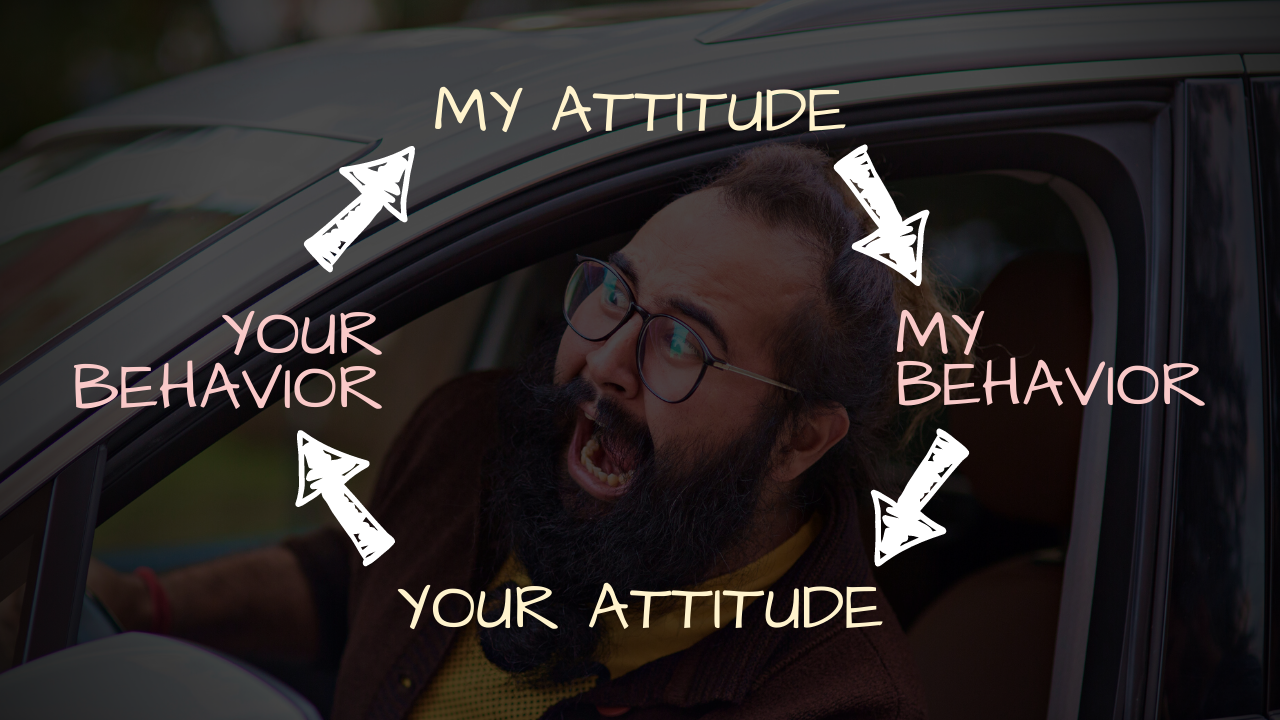|
“Not in his goals but in his transitions man is great.” — Ralph Waldo Emerson
Read the full story ⬇︎
Walking through the parking lot, I put a smile on my face. After all, you never know who might be watching from the windows—and setting the tone for arrival doesn’t just have to start at “hello.”
Stepping into the building, I was greeted by Kelsea Trefethen, the alternative education teacher who invited me to work with her campus community. It was quite early in the morning and students were still having breakfast in the cafeteria, so I suggested it would be nice to go in and say hello. Taking time to greet them beforehand is a primary practice, demonstrating that I’m not merely there to deliver a presentation by speaking at them. Rather, I’m there to speak with them—learning with and from each other, to help them feel seen, heard, and valued. When the bell rang and students filed through the halls, that was the cue to make my way to the gymnasium and get to work. In just under an hour, the entire school would be meeting in the gym to hear my keynote address to kick off their Teen Issues Day, and there was much to prepare to ensure the room was ready for their arrival. When the day was over, Kelsea had this to say about our collaboration: “From the moment you arrived, to the moment you left, your positive energy was felt throughout the building. You arrived composed and ready to meet everyone and anyone—a true testament to your preparation and genuine care for others.” This vignette is a valuable reminder that how we show up for the people we serve can have a direct impact on the constructiveness and success of the experience.
Cycle of Influence
How often have you responded to a smile with a smile? Anger with anger? Kindness with kindness? Or gossip with gossip? Attitudes and behaviors have a cyclical influence, where your attitude influences your behavior, and your behavior in turn influences the attitude and behavior of others—which then circle back to either reinforce or redirect your attitude and behavior. When we’re grounded in positivity, we tend to exhibit constructive and encouraging behaviors—offering kindness and compassion with a welcoming smile. Yet, when we’re instead grounded in negativity, we tend to exhibit destructive and discouraging behaviors—offering complaints and criticisms with a shunning scowl. If our aim is to foster constructive and encouraging experiences, rather than destructive and discouraging experiences, then we become called to be mindful of both our attitude and behavior—giving ourselves the best chance to show up as a force for good for the people we serve, even in the midst of abiding change. Life In Transition The psychological process that helps us adapt to change is called transition, and life can be thought of as a series of transitions. As we move from moment to moment, we may find ourselves transitioning between thoughts, conversations, activities, rooms, buildings, roads, relationships, and beyond. How elegantly we manage the challenges and stress that can come with constant change is determined by how we choose to navigate the transitional waters mentally, emotionally, and behaviorally. What follows are three simple ideas to consider for fostering constructive and encouraging experiences that can help you show up as a force for good for the people you serve.
1. Decide how you will show up.
Moments of transition can be used as an anchor to remind yourself of how you want to show up to where you’re going. Perhaps it’s while driving the car, walking through a parking lot, walking in a hallway, or anywhere else you may find yourself on the move through transition. When in these moments, ask yourself: “How do I want to show up?” Personally, my primary anchors are parking lots and hallways, so when I find myself in these places, they serve as reminders to stand up straight and put on a smile. I chose these two practices because of research demonstrating how improved posture and smiling can enhance positive emotions while also helping to recover from negative mood states. What’s more, an upright posture also helps to signal confidence and a smile works to activate mirror neurons in other people—helping to foster positive emotion within the people we meet along the way.
2. Remember to breathe
When Chuck Noland returned home after spending four years on a deserted island, he offered some poignant advice about survival: “I know what I have to do now. I’ve got to keep breathing, because tomorrow the sun will rise. Who knows what the tide might bring?" Even though this is a fictitious story, it does point to the truth. First of all, remembering to breathe literally keeps you alive—safely taking you from one moment to the next. This is especially important when you find yourself in times of struggle, stress, and anxiety—moments when you might consider giving up. By focusing on breathing, this practice can help to alleviate or erase destructive thought patterns and negative rumination—even if only temporarily. After all, no matter how hard we try, we can never control the future; but what we can do is learn to master the moment that’s right in front of us—one breath at a time. Breathing also activates the parasympathetic nervous system, the body’s natural process for calming down from stressful situations. The body can do this naturally on its own, but if you find your mind and emotions racing together on a crash course, you can activate your parasympathetic nervous system consciously by design. There are a number of ways to do this, but perhaps the most practical practice for activating the parasympathetic nervous system in a moment of difficulty is through big, deep, long breaths. This works because the parasympathetic nervous system is responsible for returning the lungs to their normal resting state; so by consciously making them larger through big, deep, long breaths, you’re giving your parasympathetic nervous system a job to do, and once activated, you’ll soon experience an increase in feelings of calm and relaxation. Personally, I use this practice several times every day—such as when walking into a meeting, before answering the phone, while driving home from work, or any other time where I want to show up calm and confident.
3. Pour out stress
Perhaps the best time to prepare for abiding change is during the in-between times, a call to engage in daily stress-relieving practices that provide the best chance for remaining calm when it matters most. Any activity that you enjoy can be used here—so long as it’s something you find intrinsically interesting and from which you derive pleasure from. For example, I personally choose to read a book or magazine, write in a journal, meditate, play the ukulele, pet my cat, listen to stand-up comedy, spend time with friends and family, and get some form of daily physical activity—whether it’s a walk through a park, a jog around the neighborhood, or a hike up a mountain. These are activities I enjoy merely for the pleasure of engaging in them, however they also have the added benefit of pouring out stress, enhancing cognitive function, and promoting positive emotion, among other health benefits—all valuable ingredients for facing life with greater clarity, confidence, and courage. Reflection
Final Thoughts How we show up for the people we serve has a direct impact on our success, and if our aim is to foster constructive and encouraging experiences, then we are called to learn how to master the moment and transition well. After all, it is not in the aim but in the transition that our significance can be found—helping us to show up as a force for good for the people we serve. “So keep on smiling, ‘cause when you’re smiling the whole world smiles with you." Want More? Jonas Cain is an educator, facilitator, and coach for Hashtag Positivity, helping leaders and their influencers grow with the flow to experience joy. Schedule a strategy session with him today to discuss your challenges, goals, and obstacles. References Baikie, K.A. & Wilhelm, K. (2005). “Emotional and physical health benefits of expressive writing.” Advances in Psychiatric Treatment, 11(5). pp. 338-346. doi.org/10.1192/apt.11.5.338 Barry, S. (2011, February 7). “I feel your smile, I feel your pain: Can we ever really feel another person’s happiness or pain?” Psychology Today. www.psychologytoday.com/us/blog/eyes-the-brain/201102/i-feel-your-smile-i-feel-your-pain Bridges, W. & Bridges S. (2019). Transitions: Making sense of life's changes. Da Capo Lifelong Books. Emerson, R.W. (1904). The Complete Works, Vol. XII: Natural History of Intellect and Other Papers. The Riverside Press. www.bartleby.com/90/1201.html Kuchinskas, S. (2010). “How making music reduces stress: Playing some tunes is just what the doctor ordered to fight the ill effects of chronic stress.” WebMD. www.webmd.com/balance/stress-management/features/how-making-music-reduces-stress Levine, S.L.; Cherrier, S. Holding, A.C.; Koestner, R. (2020). “For the love of reading: Recreational reading reduces psychological distress in college students and autonomous motivation is the key.” Journal of American College Health, 70(1). pp 158-164. doi.org/10.1080/07448481.2020.1728280 Lin, S.; Faust, L.; Robles-Granda, P.; Kajdanowicz, T. & Nitesh V. Chawla. (2019, June 6). “Social network structure is predictive of health and wellness.” Plos One. doi.org/10.1371/journal.pone.0217264 Lis, L. (2011, March 23). “Body language: Using your body to communicate.” Psychology Today. www.psychologytoday.com/us/blog/the-shameless-psychiatrist/202103/body-language-using-your-body-communicate “Meditation: A simple, fast way to reduce stress.” (n.d.). Mayo Clinic. www.mayoclinic.org/tests-procedures/meditation/in-depth/meditation/art-20045858 Pendry, P. & L. Vandagriff, J.L. (2019). “Animal visitation program reduces cortisol levels of university students: A randomized controlled trial.” AERA Open, 5(2). journals.sagepub.com/doi/10.1177/2332858419852592 Rod K. Dishman, R.K.; Sothmann, M.; Praag, H.; Molitor, N.; Ducharme, E.; Anthony C.; Hackney, A.C. & Hillman, C. (2020, March 4). “Working out boosts brain health.” American Psychological Society. www.apa.org/topics/exercise-fitness/stress Shay, L., Fisher, M. & Goodwin, J. (1928). "When You're Smiling." Mills Music. Smyth, J.M.; Johnson, J.A.; Auer, B.J.; Lehman, E.; Talamo, G.; Sciamanna, C.N. (2018). “Online positive affect journaling in the improvement of mental distress and well-being in general medical patients with elevated anxiety symptoms: A preliminary randomized controlled trial." JMIR Ment Health, 5(4). doi.org/10.2196/11290 Stress management: Activating the parasympathetic nervous system. (2019, August 2). Origin Recovery. www.originsrecovery.com/stress-management-activating-the-parasympathetic-nervous-system/ “Stress relief from laughter? It's no joke: When it comes to relieving stress, more giggles and guffaws are just what the doctor ordered.” (n.d.). Mayo Clinic. www.mayoclinic.org/healthy-lifestyle/stress-management/in-depth/stress-relief/art-20044456 Tsujita, H. & Rekimoto, J. (2011). “Smiling makes us happier: enhancing positive mood and communication with smile-encouraging digital appliances.” UbiComp '11: Proceedings of the 13th international conference on Ubiquitous computing. pp. 1–10. doi.org/10.1145/2030112.2030114 Veenstra, L.; Schneider, I.K. & Koole, S.L. (2017). “Embodied mood regulation: the impact of body posture on mood recovery, negative thoughts, and mood-congruent recall.” Cognition and Emotion, 31(7), pp. 1361-1376. doi.org/10.1080/02699931.2016.1225003 Zemeckis, R. (Director). (2000). Castaway [Film]. 20th Century Fox.
0 Comments
Leave a Reply. |
AuthorJonas Cain, M.Ed. is a storyteller, magician, musician, and facilitator of fascination on a mission to help you experience abiding joy. Topics
All
SubscribeArchives
July 2024
|


















 RSS Feed
RSS Feed
